
How to Use L76K GNSS Module for SeeedStudio XIAO: Examples, Pinouts, and Specs
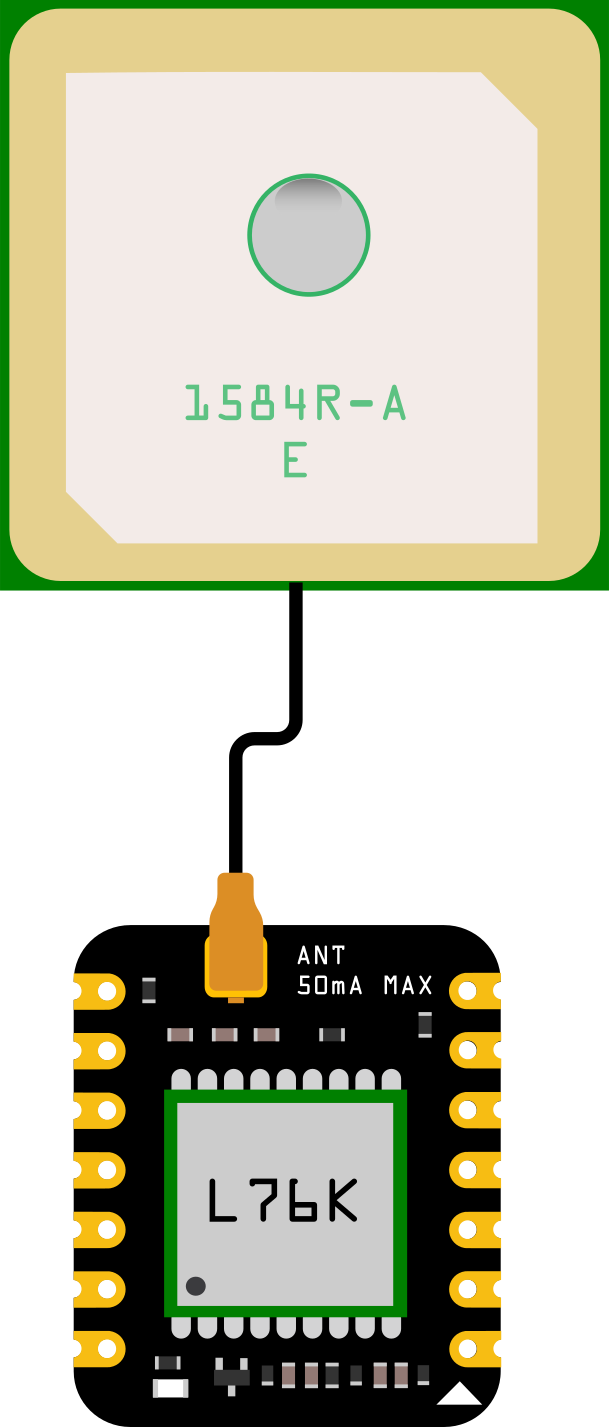
 Design with L76K GNSS Module for SeeedStudio XIAO in Cirkit Designer
Design with L76K GNSS Module for SeeedStudio XIAO in Cirkit DesignerIntroduction
The L76K GNSS Module is a compact and high-performance GPS receiver designed for high-precision positioning applications. It supports multiple Global Navigation Satellite Systems (GNSS), including GPS, GLONASS, and BeiDou, ensuring reliable and accurate location data. The module is optimized for low power consumption, making it an excellent choice for portable and battery-powered devices.
This module is fully compatible with the SeeedStudio XIAO platform, enabling seamless integration into a wide range of projects, such as IoT devices, wearable technology, vehicle tracking systems, and outdoor navigation tools.
Explore Projects Built with L76K GNSS Module for SeeedStudio XIAO
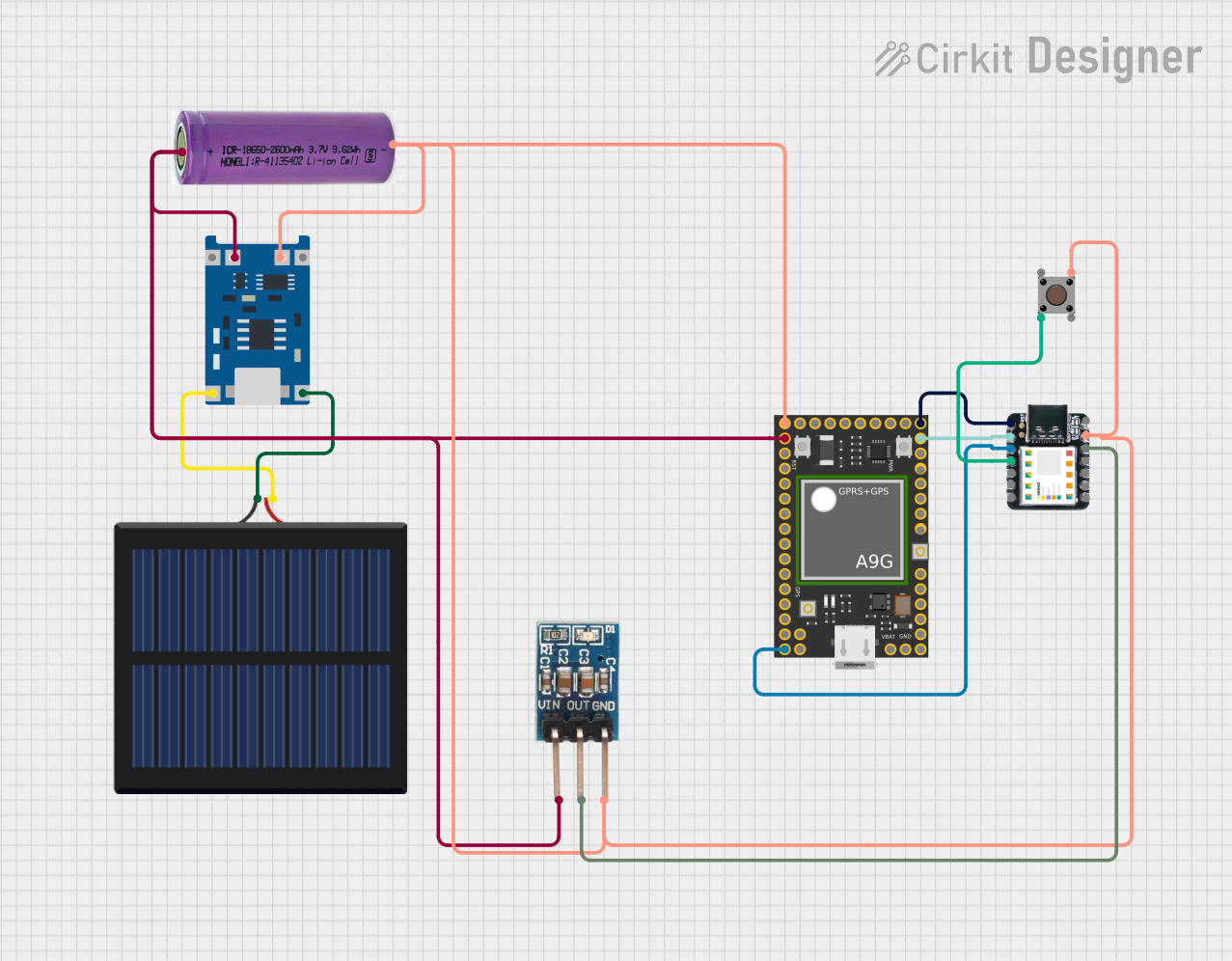
 Open Project in Cirkit Designer
Open Project in Cirkit Designer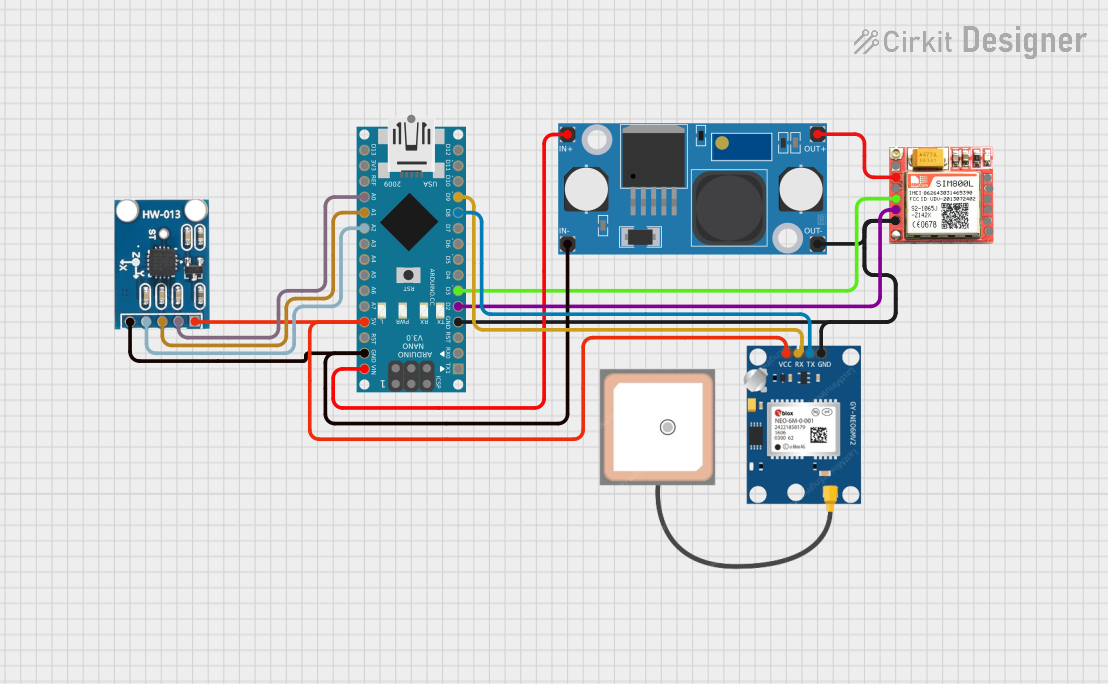
 Open Project in Cirkit Designer
Open Project in Cirkit Designer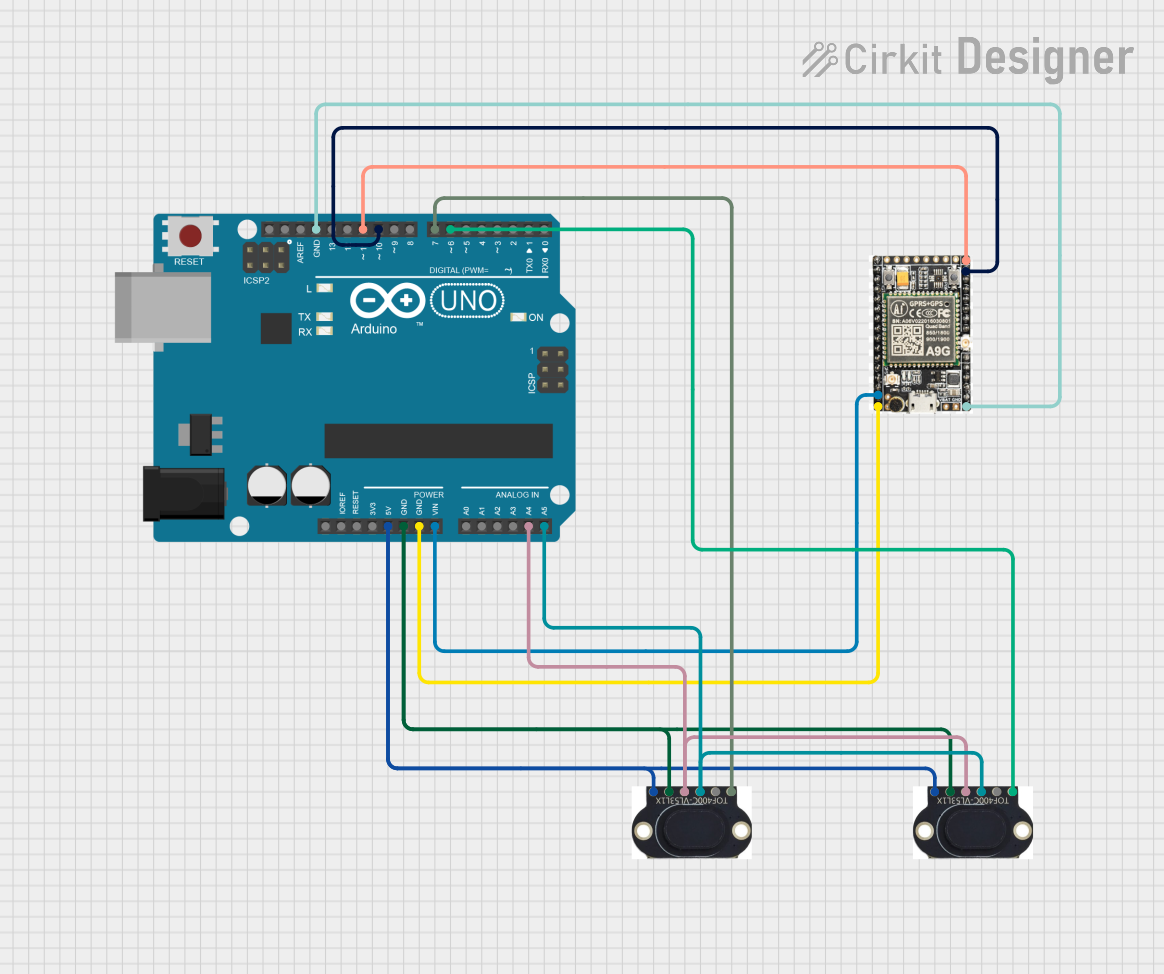
 Open Project in Cirkit Designer
Open Project in Cirkit Designer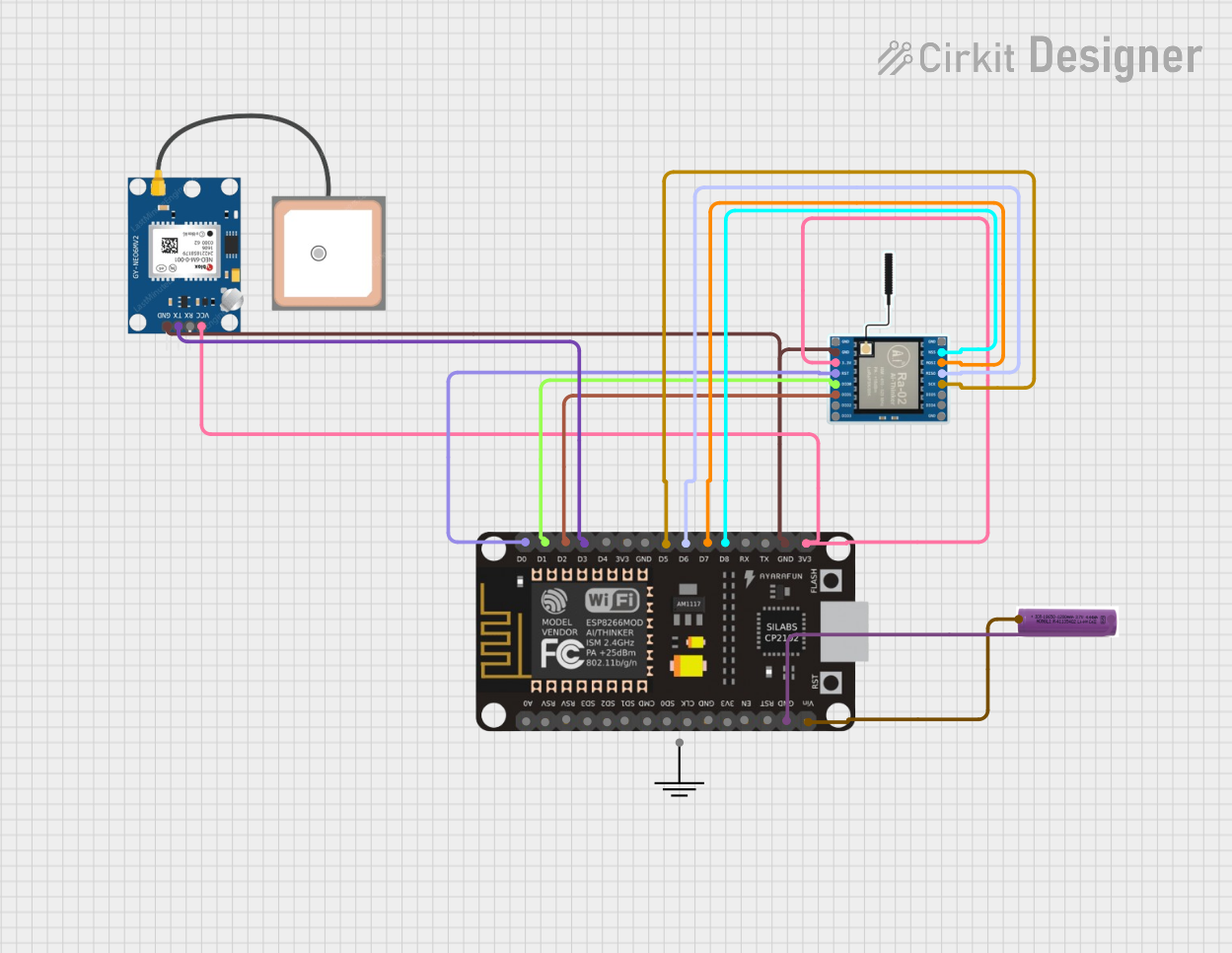
 Open Project in Cirkit Designer
Open Project in Cirkit DesignerExplore Projects Built with L76K GNSS Module for SeeedStudio XIAO

 Open Project in Cirkit Designer
Open Project in Cirkit Designer
 Open Project in Cirkit Designer
Open Project in Cirkit Designer
 Open Project in Cirkit Designer
Open Project in Cirkit Designer
 Open Project in Cirkit Designer
Open Project in Cirkit DesignerTechnical Specifications
Below are the key technical details and pin configuration of the L76K GNSS Module:
Key Technical Details
| Parameter | Specification |
|---|---|
| GNSS Systems Supported | GPS, GLONASS, BeiDou |
| Positioning Accuracy | 2.5 meters CEP (Circular Error Probable) |
| Update Rate | 1 Hz (default), configurable up to 10 Hz |
| Operating Voltage | 3.3V |
| Power Consumption | 18 mA (tracking mode) |
| Communication Interface | UART (default), I2C |
| Operating Temperature | -40°C to +85°C |
| Dimensions | 10.1 mm x 9.7 mm x 2.5 mm |
Pin Configuration and Descriptions
| Pin Name | Pin Number | Description |
|---|---|---|
| VCC | 1 | Power supply input (3.3V) |
| GND | 2 | Ground |
| TX | 3 | UART Transmit (data output) |
| RX | 4 | UART Receive (data input) |
| PPS | 5 | Pulse Per Second output for timing |
| SDA | 6 | I2C Data Line (optional) |
| SCL | 7 | I2C Clock Line (optional) |
| RST | 8 | Reset pin (active low) |
Usage Instructions
How to Use the L76K GNSS Module in a Circuit
- Power Supply: Connect the VCC pin to a 3.3V power source and the GND pin to ground.
- Communication Interface:
- For UART communication, connect the TX pin of the module to the RX pin of the SeeedStudio XIAO and the RX pin of the module to the TX pin of the XIAO.
- For I2C communication, connect the SDA and SCL pins to the corresponding I2C pins on the XIAO.
- PPS Pin: If precise timing is required, connect the PPS pin to a GPIO pin on the XIAO.
- Reset: Optionally, connect the RST pin to a GPIO pin for manual or software-controlled resets.
Important Considerations and Best Practices
- Ensure the module has a clear view of the sky for optimal satellite reception.
- Use decoupling capacitors near the VCC pin to reduce noise and improve stability.
- Avoid placing the module near high-frequency components or metal enclosures that may interfere with GNSS signals.
- Configure the baud rate of the UART interface to match the default setting of the module (9600 bps) or adjust it as needed.
Example Code for SeeedStudio XIAO (UART Communication)
Below is an example Arduino sketch to interface the L76K GNSS Module with the SeeedStudio XIAO:
#include <SoftwareSerial.h>
// Define RX and TX pins for SoftwareSerial
#define RX_PIN 6 // Connect to TX pin of L76K
#define TX_PIN 7 // Connect to RX pin of L76K
// Create a SoftwareSerial object
SoftwareSerial gpsSerial(RX_PIN, TX_PIN);
void setup() {
// Initialize hardware serial for debugging
Serial.begin(115200);
while (!Serial);
// Initialize software serial for GPS communication
gpsSerial.begin(9600); // Default baud rate of L76K module
Serial.println("L76K GNSS Module Initialized");
}
void loop() {
// Check if data is available from the GPS module
while (gpsSerial.available()) {
char c = gpsSerial.read(); // Read one character from GPS
Serial.print(c); // Print the character to the Serial Monitor
}
}
Notes:
- Replace
RX_PINandTX_PINwith the actual GPIO pins used on the SeeedStudio XIAO. - Ensure the baud rate in
gpsSerial.begin()matches the module's configuration.
Troubleshooting and FAQs
Common Issues and Solutions
No Data Received from the Module:
- Verify the wiring connections, especially the TX and RX pins.
- Ensure the module is powered with a stable 3.3V supply.
- Check the baud rate settings in the code and ensure they match the module's configuration.
Inaccurate or No Positioning Data:
- Ensure the module has a clear view of the sky without obstructions.
- Wait for a few minutes after powering on the module to allow it to acquire satellite signals.
- Check for sources of interference, such as nearby electronic devices or metal objects.
Module Not Responding to Commands:
- Verify the reset pin is not held low.
- Ensure the correct communication interface (UART or I2C) is being used.
FAQs
Q: Can the L76K GNSS Module work indoors?
A: While the module may work indoors near windows, its performance is significantly better outdoors with a clear view of the sky.
Q: How can I increase the update rate of the module?
A: The update rate can be configured up to 10 Hz using specific commands sent via the UART or I2C interface. Refer to the module's datasheet for details.
Q: Is the module compatible with 5V systems?
A: No, the module operates at 3.3V. Use a level shifter if interfacing with a 5V system.
Q: What is the purpose of the PPS pin?
A: The PPS (Pulse Per Second) pin provides a precise timing signal that can be used for synchronization in time-sensitive applications.